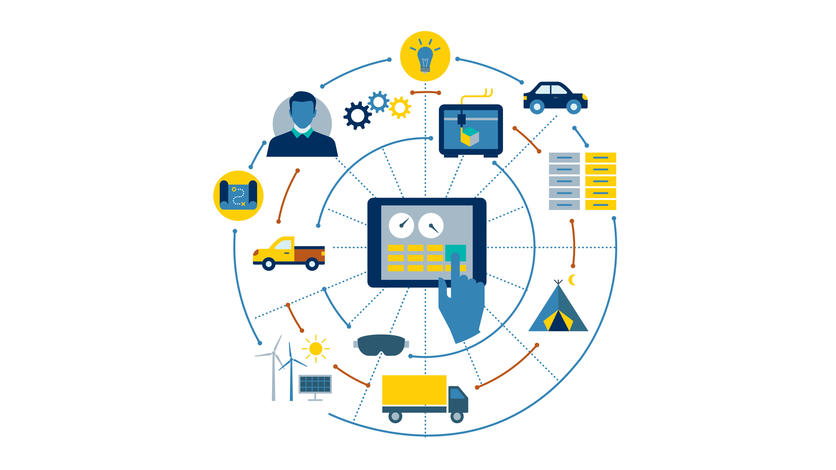
King of Making Connections
Roll back the clock just a few years, and the resurgence of downtown Detroit as a business hub doesn't feel like the inevitability it does today. Back then, the whole corridor was missing many of the good-for-business necessities, like renovated office spaces and a trendy restaurant scene for wooing clients. Believe it or not, even reliable high-speed internet wasn’t something you could take for granted.
“For example, we had a friend who was trying to start a coworking space,” said Rocket Fiber co-founder Randy Foster ('10 B.S.). “And when she found a space and tried to order internet, the incumbent provider told her it was going to be six to eight months and cost $20,000. They were a small start-up — they didn't have that. The idea that, in a fairly major city, you didn't have easy access to high-speed internet — that just seems crazy. But that’s the way things were after decades of disinvestment.”
So Foster and his two business partners leaped into that void with a crazy ambitious plan to lay down a gigabit speed fiber optic network in — and in many cases, underneath — the city's downtown core. A few years of digging and trenching later and Rocket Fiber is not only being perpetually held up as one of Detroit’s sexier startup successes. It’s also helped set up everyone from big corporations relocating back from the suburbs to small entrepreneurs working from apartment home offices.
“I’m amazed too at the small shops we’re working with,” Foster said. “In our space, you immediately think of the big corporate customers and residential service. But there’s an in-between. Like a lawyer, who only employs five people, but needs enough speed to upload a ton of legal documents; or a restaurant that needs Wi-Fi for its customers. That’s a niche that was completely missed for a while, but it’s an area with a ton of growth.”
Foster is watching two additional emerging markets as Rocket Fiber expands its network. First, the connected and driverless vehicle revolution will in many ways be driven by bandwidth. Already in the testing and development phase, AI-powered vehicles are generating huge data sets, which then have to be passed around among automakers and tech firms. And once driverless vehicles hit roads en masse, there will be almost unimaginable amounts of information flying around both wired and wireless networks as the cars talk to traffic infrastructure and each other.
"The idea that, in a fairly major city, you didn't have easy access to high-speed internet — that just seems crazy. But that’s the way things were after decades of disinvestment."
Perhaps the even taller mountain to climb will be bringing that high-quality, high-speed internet to Detroit’s neighborhoods. In some ways, Foster says, as a spread out, depopulated city, Detroit suffers from an urban version of the “last mile” problem— the term used to describe the cost challenge of building internet infrastructure in sparsely populated areas. So far, they haven’t been able to make the numbers work on a plan to blanket Detroit with fiber. But Foster says, with 5G networks coming online in the not-so-far-off future, a combination of wired and wireless systems could create the “magic mix” that brings super high-speed service to much more of Detroit’s 139 square mile



